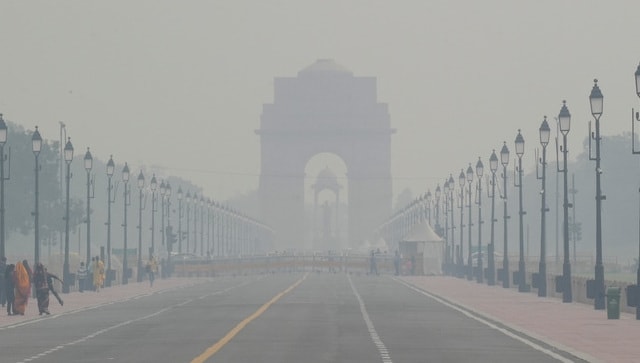A thick blanket of toxic smog continues to grip Delhi, casting a sombre haze over the city.
On Monday morning, the
Air Quality Index (AQI) in the national capital and surrounding areas surged to the season’s highest level, reaching a staggering 484 in the ‘severe plus’ category.
In a bid to address the deteriorating air quality, the Commission for Air Quality Management (CAQM) has now enforced Stage IV of the Graded Response Action Plan (GRAP).
But what does GRAP-4 entail? What restrictions are in place, and what remains unaffected? Here’s a detailed breakdown.
GRAP is a set of emergency measures designed to curb worsening air quality when it crosses critical thresholds.
The system is structured in four escalating stages:
Stage I (AQI 201-300): Enforces strict controls on polluting vehicles, dust management at construction sites, and increased automated road cleaning efforts.
Stage II (AQI 301-400): Focuses on enhanced street cleaning, targeted air pollution reduction, and expanded public transport options.
Stage III (AQI 401-450): Introduces stricter measures, including a ban on non-essential construction and demolition activities, along with intensified road cleaning.
Stage IV (AQI > 450): Imposes severe restrictions, such as halting truck movement, suspending public infrastructure projects, and reducing office attendance by half.
The first phase of GRAP was triggered in October when Delhi’s AQI surpassed the 300 threshold. GRAP II was then implemented, followed by
Stage III last week as air quality entered the ‘severe’ range.
Under GRAP Stage 4, certain activities remain allowed despite the strict restrictions:
Essential vehicles: Trucks transporting essential goods or providing vital services are permitted to operate. Additionally, vehicles using cleaner fuels like LNG, CNG, electricity, or BS-VI diesel are allowed entry into Delhi.Note: Bharat Stage (BS) are the emission standards controlling how much pollution internal combustion engines can emit.
Public transport and emergency services: Public transit, including buses, the Metro, and emergency vehicles, continue to operate, ensuring residents can move around the city.
To ease congestion, the government is encouraging citizens to use public transport and carpool whenever possible. In response, the Delhi Metro has added 60 extra trips to support public transport use.
Online and work-from-home operations: Both private and municipal offices are functioning at 50 per cent capacity, with the remainder of staff working remotely to maintain business continuity.
Although CAQM hasn’t mandated work-from-home arrangements, it has suggested that the Delhi government allow both government and private offices to operate at half capacity, with the other half working from home. A similar request has been made to the Centre for Central Government Employees.
Educational institutions: From Monday, students in schools up to Class 11 will switch to online classes until further notice, Delhi Chief Minister Atishi announced via Twitter on Sunday. However, in-person lessons for Classes 10 and 12 will proceed as scheduled.
The CAQM panel has also introduced several bans and restrictions to help reduce pollution levels:
Ban on entry of heavy vehicles: Diesel-powered medium and heavy goods vehicles (BS-IV or below) registered in Delhi are prohibited, except those transporting essential commodities. Trucks carrying non-essential items are also banned from entering the city unless they run on LNG, CNG, or BS-VI diesel.
Restrictions on light commercial vehicles: Non-essential light commercial vehicles (LCVs) from outside Delhi are barred unless they operate on electric, CNG, or BS-VI diesel and are carrying essential goods or services.
Ban on construction activities: Construction activities for public infrastructure, including highways, roads, flyovers, power transmission lines, and pipelines, are strictly prohibited, extending the measures enforced under Stage 3 of GRAP.
Other Restrictions: State governments are also considering further actions, such as closing colleges, halting non-essential commercial operations, and imposing vehicle restrictions like the odd-even scheme to curb traffic emissions.
According to the CAQM, Delhi’s Air Quality Index (AQI) stood at 441 (‘Severe’) around 4 pm on Sunday. It then worsened to 447 at 5 pm, 452 at 6 pm, and 457 by 7 pm, showing a steady rise. By Monday morning, the AQI hit the ‘Severe+’ level, reaching 481 at 6 am.
Meanwhile, the India Meteorological Department issued an Orange Alert due to dense fog across the city.
As per News18, at 8:30 am, visibility at Safdarjung was reduced to just 300 metres.
Blanketed in thick fog, visibility in the capital also plummeted, disrupting flight and train schedules and causing widespread delays.
According to Flightradar24, over 160 flights—118 departures and 43 arrivals—faced delays at Delhi Airport up until 8:30 am because of the reduced visibility. Additionally, around 30 train services were delayed, with some experiencing waits of three to four hours.
To make matters worse, the Indian Institute of Tropical Meteorology has forecast that the air quality will remain in the ‘severe’ or ‘severe+’ range over the next six days, due to persistent unfavourable conditions for pollutant dispersion, reports Indian Express.
With input from agencies
Link to article –
GRAP-4 enforced in Delhi-NCR as air quality reaches ‘severe plus’. What’s allowed, what’s not?
